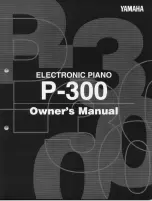
module. Relays K1 and K2 bypass these filters during AM operation (the control input labeled
SCAN N is on only during amplitude modulation, not scan modulation).
Higher frequency bands are level-controlled by PIN diode attenuator circuits in the microwave
module. These attenuators do not require differential control inputs. For Band 1 (2-8 GHz), the
level driver is the circuit which includes U5. The filter associated with this band (see L3) is
bypassed through relay K3 during AM operation. For Band 2 (8-20 GHz), the level driver is the
circuit which includes U10. The filter associated with this band (see L4) is bypassed through
relay K4 during AM operation.
The remaining level drives are unused in this design.
3.3.12
Power Supply — PC Assembly A11
Most of the power is furnished directly from the switching power supply assembly to the
circuits that require it. However, some voltages require further conditioning or are independent
of the switching PS assembly. For those voltages, the Power Supply PC assembly provides the
functions of rectification, regulation, filtering, and switching.
The circuit consisting of R22, R23, and C1 filters the +24V supply to eliminate fan-generated
noise.
The +15 V input at J1-23 is furnished to the front panel display drivers, and also (through
power FETs Q1 through Q6) to various band-related sections of the microwave module. To
minimize power dissipation in this module, each FET is switched on only when the associated
frequency band is in use. The FETs are switched by gates U7A through U7-F, which are in turn
switched by the computer by way of the latch (U6) and the latch strobe (U5). The voltages for
the frequency doublers in the 20-28 band (Q5) and the 28-40 band (Q6) are re-regulated down
to +12 V by U2 and U1. The +15 V supply is also applied to an overload detection circuit (see
U8), which is needed to protect the power FETs. If the +15 V input falls below an acceptable
level, the latch is cleared, the FETs are turned off, and the OVERLOAD LED is turned on.
Standby power (including a heater voltage for the timebase oscillator crystal oven) is supplied
through a small transformer located near the cooling fan. The 20 VAC inputs from the
transformer are rectified by CR2 and regulated by U3 as a +15 V heater voltage for the
timebase. The rectified 20 VAC input drives the line power relay, and is also doubled by CR3
and CR4 and regulated by U4 to make a +35 VDC output for the front panel fluorescent
displays.
Theory of Operation
Manual No. 120AM00250, Rev C, September 1998
3-25
Summary of Contents for GT 9000
Page 12: ...Series GT 9000 Microwave Synthesizers x Manual No 120AM00250 Rev C September 1998 ...
Page 14: ...Series GT 9000 Microwave Synthesizers xii Manual No 120AM00250 Rev C September 1998 ...
Page 18: ...Series GT 9000 Microwave Synthesizers xvi Manual No 120AM00250 Rev C September 1998 ...
Page 20: ...Series GT 9000 Microwave Synthesizers xviii Manual No 120AM00250 Rev C September 1998 ...
Page 94: ...Model GT 9000 Microwave Synthesizer 3 36 Manual No 120AM00250 Rev C September 1998 ...
Page 122: ...Model GT 9000 Microwave Synthesizer 4 28 Manual No 120AM00250 Rev C September 1998 ...
Page 142: ...Model GT 9000 Microwave Synthesizer 5 16 Manual No 120AM00250 Rev C September 1998 ...
Page 198: ...Model GT 9000 Microwave Synthesizer 6 56 Manual No 120AM00250 Rev C September 1998 ...
Page 206: ...Model GT 9000 Microwave Synthesizers 7 2 Manual No 120AM00250 Rev C September 1998 ...
Page 232: ...Model GT 9000 Microwave Synthesizer A 26 Manual No 120AM00250 Rev C September 1998 ...
Page 238: ...Model GT 9000 Microwave Synthesizer Index 6 Manual No 120AM00250 Rev C September 1998 ...
















































